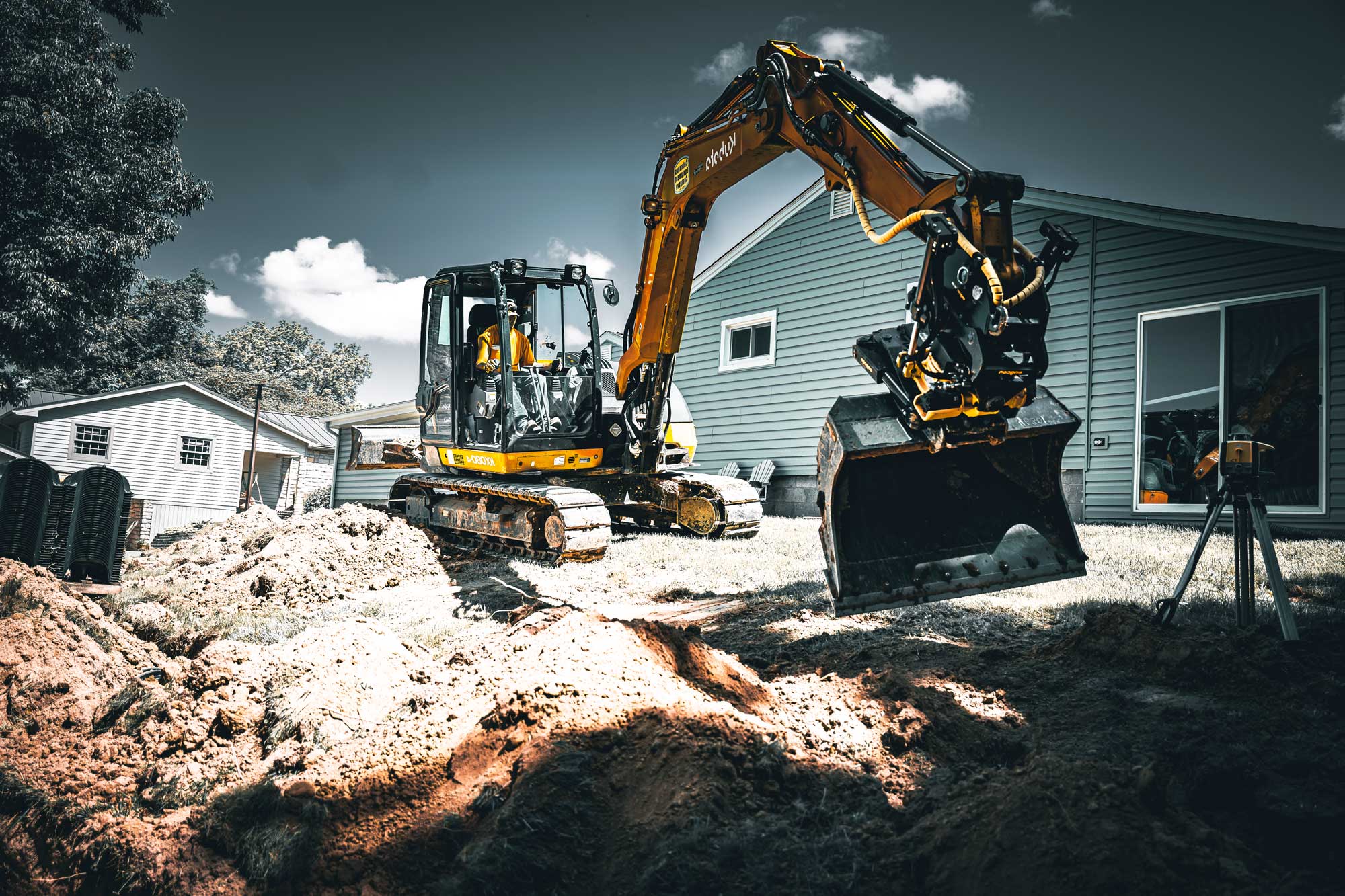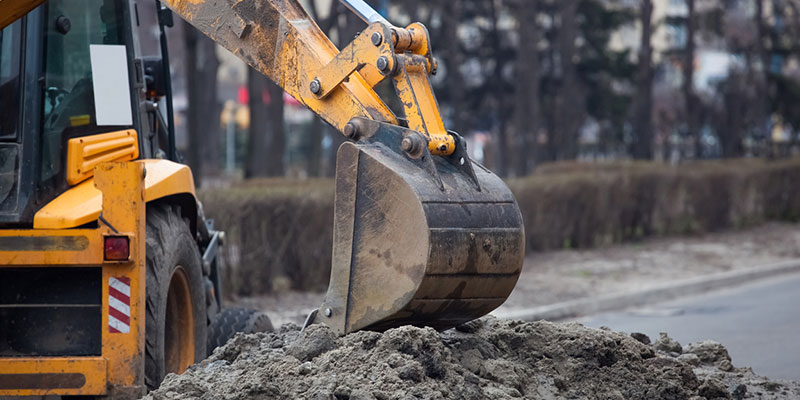Professional Septic Ohio - Trusted Septic Tank Specialists in Ohio
Professional Septic Ohio - Trusted Septic Tank Specialists in Ohio
Blog Article
In-Depth Expedition: The Science Behind Superior Excavation Practices
From old hand devices to modern hydraulic excavators, the evolution of excavation methods has been a testament to human ingenuity and technological advancements. What truly establishes premium excavation techniques apart is a deep understanding of geological concepts, coupled with the usage of advanced devices and techniques.
Development of Excavation Methods
Throughout background, the advancement of excavation techniques has played an important duty in advancing building methods and archaeological explorations. From the basic devices made use of by our forefathers to the sophisticated equipment utilized in contemporary times, the development of excavation approaches has substantially transformed exactly how we come close to various projects.
In ancient times, manual labor with fundamental tools such as wheelbarrows, shovels, and pickaxes was the primary technique of excavation. This labor-intensive procedure limited the depth and extent of excavations, frequently causing sluggish progress and restricted access to particular sites. Nonetheless, as civilizations progressed, so did the tools and methods used for excavation.
The Industrial Revolution marked a turning point in excavation practices with the introduction of steam-powered machinery. In modern times, technology plays a critical function in excavation, with improvements like General practitioner systems, drones, and 3D scanning improving precision and efficiency in the field.
Function of Technology in Excavation

The assimilation of innovative modern technology has fundamentally changed the area of excavation, improving accuracy and performance to extraordinary levels. One of the vital technological advancements that has actually substantially impacted excavation practices is the application of GPS systems. These systems permit for accurate mapping of excavation sites, enabling drivers to precisely locate below ground utilities and structures. In addition, making use of telematics in excavation equipment has made it possible for real-time tracking of machine efficiency, causing proactive upkeep and enhanced functional efficiency.
In addition, the development of 3D modeling and simulation software has structured the preparation procedure for excavation projects. Operators and engineers can now picture the entire excavation procedure prior to beginning, identifying possible obstacles and maximizing process. Together with this, the execution of drones in excavation activities has actually assisted in aerial studies, volumetric dimensions, and site evaluations with unmatched speed and accuracy.
Geological Principles in Excavation
An understanding of geological concepts is vital for making certain the architectural stability and stability of excavation websites. Geological elements play a vital role in figuring out the expediency and security of excavation jobs (septic ohio). One vital geological concept to take into consideration is the kind of soil or rock present at the website. Different soil types, such as clay, crushed rock, or sand, have differing levels of security and call for various excavation strategies. As an example, natural soils like clay may require additional assistance to avoid collapses, while sandy soils may be vulnerable to disintegration throughout excavation.
By conducting comprehensive geological studies and analysis, engineers and excavators can establish approaches to mitigate dangers and make certain the successful completion of excavation tasks. Ultimately, integrating geological concepts into excavation methods is critical for accomplishing risk-free, reliable, and sustainable results.

Most Recent Devices for Excavation
In the world of excavation techniques, contemporary advancements in tools have transformed the efficiency and precision of excavation processes. Among the latest devices making waves in the market is using drones furnished with sophisticated imaging innovation. These drones can supply in-depth aerial surveys of excavation sites, offering real-time information on topography and possible my website dangers. This info help in better preparation and decision-making throughout the excavation process.
An additional cutting-edge tool gaining appeal is the implementation of 3D printing modern technology for producing customized excavation tools. This enables the production of specialized devices that are customized to the specific demands of a project, boosting efficiency and reducing downtime.
Additionally, advancements in materials scientific research have actually caused the advancement of more powerful and much more long lasting excavation devices. lancaster trenching. Tungsten carbide-tipped excavator accessories, as an example, offer remarkable performance in tough ground problems, boosting efficiency on-site
Science's Effect on Excavation Practices

Moreover, developments in products science have actually brought about the production of stronger, more sturdy excavation devices and equipment. The usage of composite materials in shovels and diggers has actually improved their efficiency and durability, eventually raising performance on excavation sites. In addition, scientific study on soil technicians and geotechnical engineering has actually provided beneficial understandings into dirt habits, permitting excavation professionals to make enlightened decisions pertaining to excavation methods and dirt stabilization methods. Overall, scientific research proceeds to drive advancement and improvement in excavation techniques, making excavation projects much more reliable, cost-effective, and lasting.

Conclusion
In conclusion, the advancement of excavation strategies has actually been considerably affected by developments in innovation and a deeper understanding of geological principles. The most recent tools and devices utilized in excavation have actually boosted performance and precision in the area. The application of scientific understanding has substantially improved excavation methods, leading to more effective and lasting approaches for digging deep into numerous sorts of products.
In the world of excavation methods, modern innovations in devices have actually reinvented the performance and precision of excavation processes. By leveraging scientific principles, the excavation sector has actually been able to substantially enhance effectiveness, accuracy, and safety in excavation procedures. GPR permits excavation teams to non-invasively check check this and map subsurface frameworks, energies, and possible threats, enabling them to prepare excavation tasks with higher precision and reduced risk of crashes.
Furthermore, clinical research on soil auto mechanics and geotechnical engineering has actually provided important insights into dirt habits, enabling excavation professionals to make enlightened choices concerning excavation approaches and dirt stabilization strategies. Overall, scientific research proceeds to drive development and enhancement in excavation practices, making excavation tasks a lot more reliable, affordable, and sustainable.
Report this page